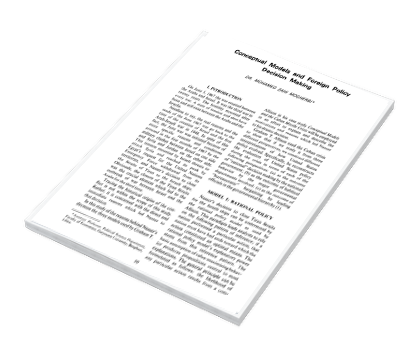Conceptual Models and Foreign Policy Decision Making
DOI:
https://doi.org/10.37376/deb.v17i1.1916Abstract
On June 5, 1967 the war erupted between the Arabs and Israel. It was the third war in twenty years. The hostility mounted after every war. A state of tension and alert have been and still exist between the Arabs and the Israelis.
Needless to say, the real reasons and the seeds of the June 1967 war go back to the time of the creation of Israel and the first Arab Israeli war in 1948. In spite of this fact, the June war was initiated because of more specific reasons and conditions aroused in the first months of 1967 by the military clashes between Israel on one side and Syria and Jordan on the other side. This tension mounted by Israeli threats to attack Syria and reached its peak by Egypt's request for the United Nations Emergency Force withdrawal from its territories, and Nasser's decision to close the Straits of Tiran to the Israeli ships. Obviously, the closure of the Tiran Straits was the crucial element which led to the outbreak of war between Israel and the Arabs for the third time. Tracing the historical origins of the conflict is not within the scope of this study. Rather, it is concerned with the direct and immediate reasons which led Nasser to that decision. In this study of the reasons behind Nasser's decision the three models used by Graham T.
Downloads

Downloads
Published
How to Cite
Issue
Section
License
Copyright (c) 2022 Dirasat in Economics and Business

This work is licensed under a Creative Commons Attribution-NonCommercial-NoDerivatives 4.0 International License.







